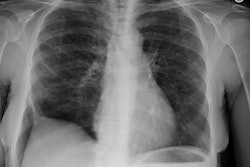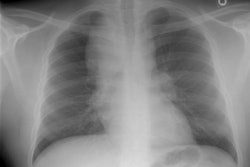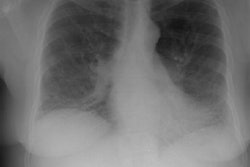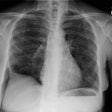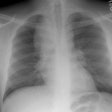Radiology 2001 Jan;218(1):242-246
Newly Diagnosed Pulmonary Sarcoidosis in HIV-infected Patients.
Haramati LB, Lee G, Singh A, Molina PL, White CS
PURPOSE: To determine the radiologic and clinical features of newly diagnosed pulmonary
sarcoidosis in human immunodeficiency virus (HIV)-infected patients. MATERIALS AND
METHODS: Ten HIV-infected patients (seven women, three men; age range, 26-66 years; mean
age, 37 years) with newly diagnosed sarcoidosis between 1989 and 1997 were retrospectively
identified. Charts were reviewed for the interval between the two diagnoses, CD4 cell
count, signs or symptoms, angiotensin-converting enzyme level, and initiation of highly
active antiretroviral therapy (HAART). Chest radiographs (n = 10) and computed tomographic
(CT) scans (n = 8) were assessed for lymphadenopathy, pulmonary nodules, focal
consolidation, reticular or granular opacities (thickened interlobular septa and
ground-glass opacities at CT), cysts or cavities, and fibrosis. RESULTS: Mean interval
between the two diagnoses was 3 years. Mean CD4 cell count was 213 cells per cubic
millimeter. When sarcoidosis was diagnosed, eight patients had pulmonary signs or
symptoms. The angiotensin-converting enzyme level was elevated in five of six patients;
two developed sarcoidosis after beginning HAART. Chest radiographs revealed
lymphadenopathy, pulmonary nodules, focal consolidation, reticular opacities, granular
opacities, and cysts or cavities. Chest CT scans revealed lymphadenopathy, nodules,
thickened interlobular septa, focal consolidation, reticular opacities, ground-glass
opacities, and cysts or cavities. There was no relationship between the radiographic
findings of sarcoidosis and the CD4 cell count. CONCLUSION: The radiologic features of
newly diagnosed sarcoidosis in HIV-infected patients resemble the findings of sarcoidosis
in non-HIV-infected patients. In HIV-infected patients receiving HAART, sarcoidosis may be
a manifestation of disease related to restoration of the immune system.
PMID: 11152809
